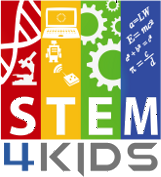We are thrilled to have you here and excited to share our latest updates and resources on Science, Technology, Engineering, and Mathematics (STEM) education for kids. Our newsletter is designed to keep you informed about our latest offerings, events, and resources that can help your kids build their STEM skills. During this start-up period, we will only be accepting a limited number of sign-ups until we finish getting the site fully operational.
When subscribing to our newsletter, please make sure to include areas you are most interested in, that way we can tailor what you receive, including special opportunities and regular updates on:
- New STEM activities and challenges that you can try with your kids
- Tips and tricks for enhancing your kids’ STEM learning experience
- Announcements of upcoming events, workshops, and webinars
- Exclusive access to our latest STEM resources, including worksheets, lesson plans, and online courses
- And, the many extraordinary benefits that are in the works!
To subscribe to our newsletter, simply enter your contact info and a participation level below and hit the subscribe button. You will receive a confirmation email shortly after, and you can unsubscribe at any time. Plus, as a thank you for subscribing, you will receive a free STEM activity guide based on the levels you indicate!
Subscribe
Overall, the key to engaging children of all ages in STEM education is to make it fun, hands-on, and relevant to their interests and goals. By doing so, we can help inspire the next generation of scientists, engineers, and innovators.
When introducing STEM educational materials, it’s important to consider the developmental level and abilities of the children. See the guidelines below when selecting your participant level:
- Preschool (ages 3-5): Children in this age range are naturally curious and love to explore. At this age, children are still developing their foundational skills such as counting, sorting, and identifying basic shapes and colors. STEM activities for this age group should focus on hands-on exploration and play-based learning, such as building with blocks, playing with water or sand, exploring nature, simple experiments, and building activities that introduce basic concepts of science, technology, engineering, and math.
- Elementary (ages 6-11): Children in this age range are starting to develop a deeper interest in science and technology. Children in this age range are capable of more complex problem-solving and can start to understand abstract concepts such as cause and effect. STEM activities for this age group should be interactive and hands-on, such as building robots, conducting science experiments, and using technology to solve problems. while introducing more advanced science and math concepts through interactive activities, experiments, and projects.
- Middle school (ages 12-14): Children in this age range are starting to think more critically and are interested in exploring more complex topics. They are ready to explore more specialized areas of STEM and further develop critical thinking skills. STEM materials for this age group should focus on challenging students with more complex projects and experiments, and introducing them to career pathways in STEM fields. STEM activities for this age group should be challenging and thought-provoking, such as designing and building their own projects, working on science fair projects, and exploring STEM careers.
- High school (ages 15-18): High school students are ready to tackle more advanced topics and explore STEM fields in greater depth. STEM materials for this age group should focus on preparing students for college-level coursework and potential STEM careers, including hands-on experience in labs and research projects. STEM activities for this age group should be focused on conducting research projects, participating in internships, and attending STEM camps, workshops or competitions.
It’s important to note that these age ranges are just general guidelines, and the individual abilities and interests of each child should also be taken into account when selecting appropriate STEM materials.
We look forward to staying connected with you and helping your kids discover the joy of STEM! We are working on building a STEM community and have more plans for getting your kids involved including more interactivity.
